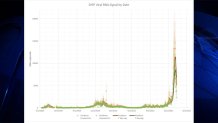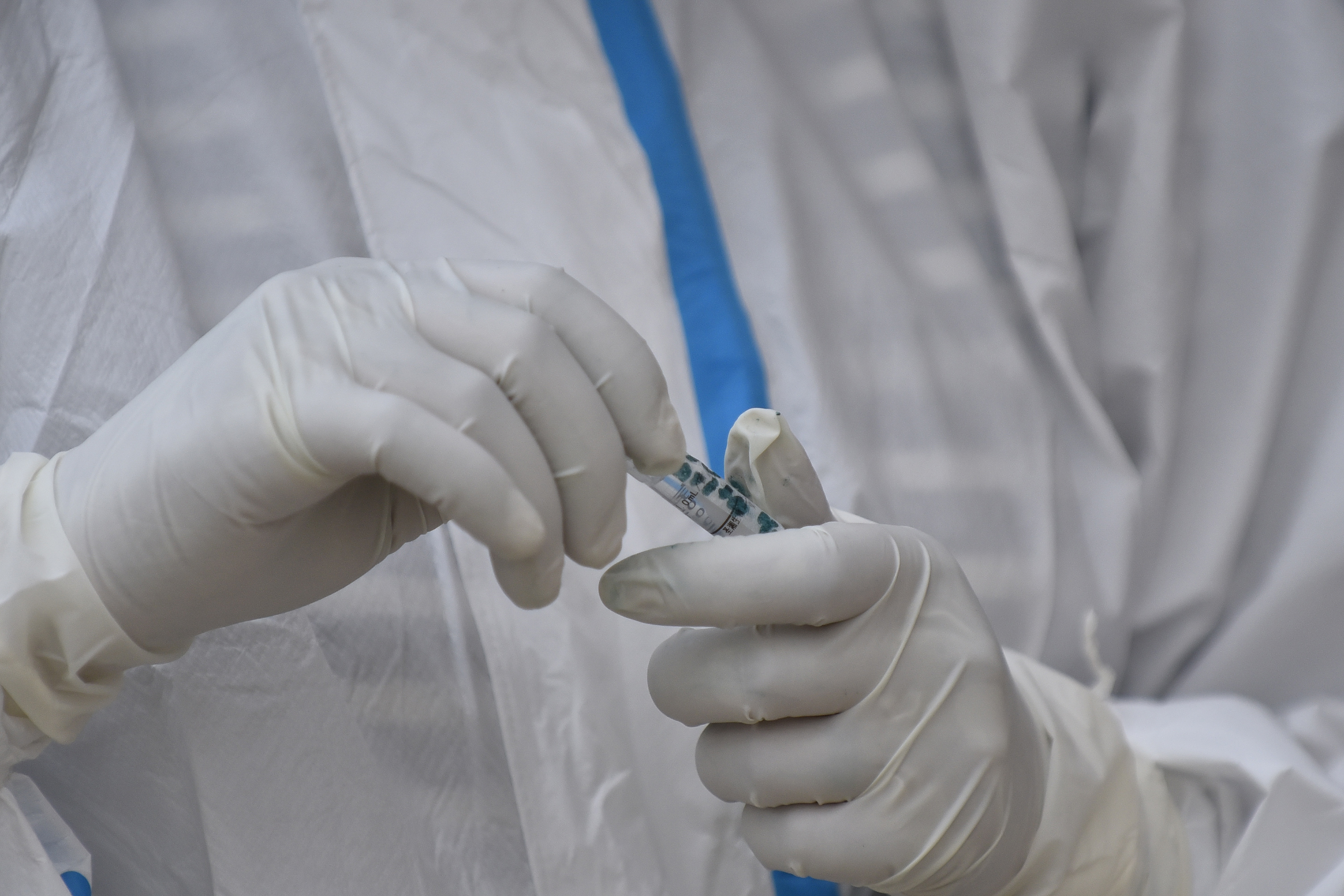The levels of COVID-19 in the Boston area appear to be dropping from historic highs, according to the latest update from its sewer system.
New data unveiled Tuesday showed the level of COVID dropping back down to where it was on Dec. 30. While that's only two weeks ago, and still higher than any point before this winter, it's still down nearly half from peak levels and could indicate that the current surge is subsiding.
WATCH ANYTIME FOR FREE
Stream NBC10 Boston news for free, 24/7, wherever you are. |
The Massachusetts Water Resources Authority's tracking system, run by Cambridge-based Biobot, works by analyzing bits of genetic material in the Boston area's sewers to indicate how much of the virus is circulating in the community.
As of Tuesday, when data was available through Jan. 11, COVID levels were averaging about 6,000 RNA copies of COVID per milliliter and trending down from a peak near 10,000.
Get updates on what's happening in Boston to your inbox. Sign up for our News Headlines newsletter.

The peak levels corresponded with historic high numbers of new cases being confirmed by COVID testing. On Wednesday, the state reported 27,612 new cases while the local death toll topped 20,000.
Health experts who spotted the update on Tuesday were optimistic about what it meant, though cautioned that more information is needed to draw a clear conclusion.
Harvard T. H. Chan School of Public Health epidemiologist Bill Hanage called it good news, noting that, because of how wastewater monitoring works, it's a strong measure of the community spread.
Hanage's Chan School colleague, Joseph Allen, called the update "great news," and linked it to trends seen elsewhere with the now-predominant omicron variant of COVID -- South Africa's omicron-fueled COVID spike was intense and short-lived.
Tufts Medical Center epidemiologist Dr. Shira Doron said she was hopeful the wastewater data was a good sign for cases.
"What we’re waiting for is this ice pick-shaped curve that we saw in South Africa, and we’re hoping we’ll see that, but there’s no guarantee we’ll see that. But we are seeing cases come down in some of the earliest, hardest-hit areas," she said.
Harvard Medical School administrator Stanley Y Shaw wondered if the data -- which he advised isn't a certain indicator -- is "a glimmer of better days ahead??"
Writing about the data on Monday, when COVID levels appeared to be plateauing but hadn't yet updated with the sharp downturn, epidemiologist Dr. Katelyn Jetelina said it was "a good sign" but one that doesn't mean the effects of the COVID peak will have subsided -- peaks in adverse effects of COVID like hospitalizations and deaths have tended to track several weeks behind the peaks of new cases.
She wrote, "regardless, this will be a peak in cases. Once we reach that point, we still have a 3-4 week window for hospitalizations and deaths to peak. It will be a rough couple of weeks coming up. Hang in there."
Proponents of wastewater COVID detection have argued that it helps give a fuller sense of the virus' spread in a community than state data, which doesn't include at-home rapid tests or people with COVID who don't take tests at all.
The data for Boston is collected from the Massachusetts Water Resources Authority's Deer Island wastewater treatment plant and analyzed by Cambridge-based Biobot Analytics three to seven times a week.
Forty-three communities from eastern Massachusetts have their water treated at the plant, including Boston, Cambridge, Framingham and Quincy. The data cannot be linked to specific cities, towns or neighborhoods.
Other areas monitor wastewater for COVID as well -- Burlington, Vermont, detected the omicron variant in its wastewater this month before the first case was officially confirmed by the Vermont Department of Public Health.



